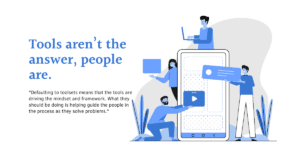How the digital landscape evolved during covid.
Covid will, without a doubt, be remembered as a defining moment in many of our lives, spanning across generations. Birthdays and holidays were missed. Schools and businesses were moved entirely to online collaboration. The whole world outside of our homes went quiet. Places that were once filled with life and interaction were silent. If ever there were a time where the immediate future was uncertain, it was the year 2020.
Something else happened, however. As the world closed its doors, we utilized technology to continue to stay in contact with each other, keep our businesses running, and carry on with our affairs by digital means. Sure, it wasn’t the perfect solution, but it slowed the bleeding. While the world of human affairs is slowly healing itself, we are coming to a long overdue realization; much of what we do in the office can be done at home. In fact, it is now known that 37% of all jobs can be done at home. There isn’t much light to make out of a global shutdown, but if there is one thing that we can be thankful for it’s the lesson we’ve learned about remote work.
Statistics (provided by owllabs.com)(can be elaborated on to fill body of blog post)
- Almost 70% of full-time workers in the U.S are working from home during COVID-19
- 1 in 2 people won’t return to jobs that don’t offer remote work after COVID-19
- 77% of respondents agree that after COVID-19, being able to work from home (WFH) would make them happier
- 75% of people are the same or more productive during COVID-19 while working from home
- In 2020, people are using video meetings 50% more than pre-COVID-19
- 1 in 2 people would move if they were able to WFH all or most of the time
- Working remotely saves 40 minutes daily on commute
- In 2020 after COVID-19, 80% expect to work from home at least 3x/week
- 1 in 5 people report working more during COVID-19
- Only 20-25% of companies pay or share the cost of home office equipment, furniture, cable, chair
- 80% agree that there should be one day a week with no meetings at all
- 81% of respondents think their employer will support remote work after COVID-19
- 23% of full-time employees are willing to take a pay cut of over 10% in order to work from home at least some of the time
- 44% did not find it necessary to get dressed up (think: clothing, hair, makeup) for a video meeting
- During COVID-19, on average, people are saving $479.20 per month
We are in a unique position in history. Technology has not only allowed us to continue our affairs during global devastation but has shown that shifting to digital workspaces can actually benefit both companies and employees. Could you imagine if this happened in a time period before the internet, or on dial up speeds? Thankfully, we won’t have to. Is it time to consider moving away from the office entirely? Only time will tell. What we do know are these two things: 1. When presented with a world changing shift, we are fortunate enough to have the technological means to adjust swiftly and 2. We are more capable and productive than we thought when allowed the personal freedom of remote work.
Covid will, without a doubt, be remembered as a defining moment in many of our lives, spanning across generations. Birthdays and holidays were missed. Schools and businesses were moved entirely to online collaboration. The whole world outside of our homes went quiet. Places that were once filled with life and interaction were silent. If ever there were a time where the immediate future was uncertain, it was the year 2020.
Something else happened, however. As the world closed its doors, we utilized technology to continue to stay in contact with each other, keep our businesses running, and carry on with our affairs by digital means. Sure, it wasn’t the perfect solution, but it slowed the bleeding. While the world of human affairs is slowly healing itself, we are coming to a long overdue realization; much of what we do in the office can now be done at home. In fact, it is now known that 37% of all jobs can be done at home. There isn’t much light to make out of a global shutdown, but if there is one thing that we can be thankful for it’s the lesson we’ve learned about remote work, thanks to technology allowing it to happen.
Note: All statistics here are provided by a survey conducted by owllabs.com in October of 2020 (unless otherwise stated).
Almost 70% of full-time workers in the U.S are working from home during COVID-19.
More than two-thirds of full-time workers in the U.S., or 68% are working from home during COVID-19. This means that seventy percent of employees at any given moment can be seamlessly supported remotely, thereby saving both their jobs as well as valuable company resources such as office space/utilities.
77% of respondents agree that after COVID-19, being able to work from home (WFH) would make them happier.
Not only do multiple resources state that a little over half of all US workers are unhappy with their jobs, but a staggering 1 in 5 US adults are reported to have some sort of mental illness. With mental health becoming an increasing concern, taking the consideration of your employees wellbeing is more important than ever.
In 2020, people are (were) using video meetings 50% more than pre-COVID-19.
This one is a given, since in person meetings were extremely risky before a vaccine was made available. However, this is a huge jump and can also be attributed to the rise in telecommuting which allows employees who work remotely to handle business through meetings without ever meeting face-to-face at an office building every day. Being able to collaborate remotely can also save individual employees nuisances such as in office distractions or lengthy commutes. In fact, another statistic to highlight in this light is that roughly 40 minutes of time in an employee’s day was saved due to cutting out the commute to and from work!
75% of people are the same or more productive during COVID-19 while working from home.
While shocking to many employers, many employees feel that they are more productive when working from home! The reasoning could be anything from the aforementioned elimination of workplace distractions to the comfort of a familiar environment, but one thing is for certain: work still gets done when management isn’t constantly looking over our shoulders.
23% of full-time employees are willing to take a pay cut of over 10% in order to work from home at least some of the time.
This one can obviously benefit companies greatly. Imagine having 5 employees who are each salaried at 75k. From the statistics above, we now know that you are likely to see 4 of them working either the same or more productively from home. On top of that, you are also saving 7.5k on each salary if all 5 agreed to move to remote work for a 10% pay cut. This not only boosts productivitiy and moral in your employees, but it saves your company 37.5k a year! You have now cut the cost of almost one entire employee!
We are in a unique position in history. Technology has not only allowed us to continue our affairs during global devastation but has shown that shifting to digital workspaces can actually benefit both companies and employees. Could you imagine if this happened in a period before the internet, or on dial up speeds? Thankfully, we won’t have to. Is it time to consider moving away from the office entirely? Only time will tell. What we do know are these two things: 1. When presented with a world changing shift, we are fortunate enough to have the technological means to adjust swiftly and 2. We are more capable and productive than we thought when allowed the personal freedom of remote work.



